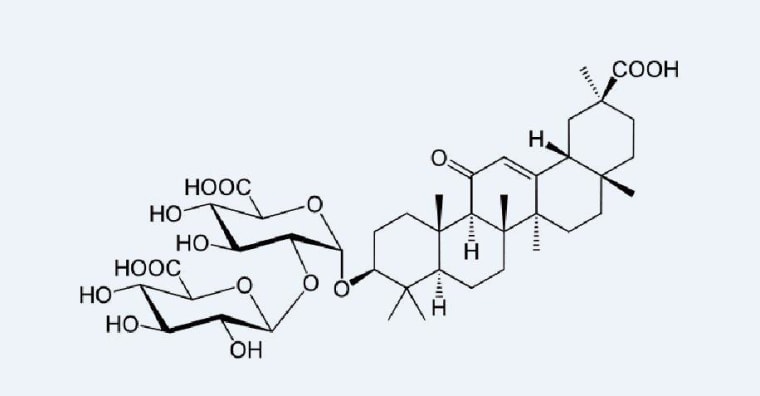We've had divine intervention in the Lakrisal investigation. Or rather, professional scientific intervention.
Ever since we tried Lakrisal for the first time, we've been plagued with nagging questions: Where did this stuff come from? Why did most of us find this super salty, soy sauce-esque taste just awful? Do folks in Nordic countries who claim to partake in the enjoyment of this candy actually enjoy it?
A self-described lover of licorice, Dr. Terry Acree teaches chemistry in the Department of Food Science at Cornell University. He offers us some clues as to why we experienced Lakrisal with such displeasure.
Glycyrrhizic acid (as seen above) is the sweet ingredient in the licorice plant. Unlike with table sugar, Acree says, the glycyrrhizic acid in licorice packs a super-sweet taste with a gradual build-up. That sensation is then slow to wear off. Adding ingredients such as ammonium chloride and more sugar -- the other two key components of Lakrisal -- changes the way the product tastes. Ammonium chloride likely enhances the salty taste of Lakrisal, he says, but that could be confirmed only through a proper lab experiment.
One other thing to note is that the proportion of sugar to licorice and ammonium chloride in Lakrisal is probably at a different level than, say, Twizzlers Black Licorice Candy (the other flavors of Twizzlers do not contain any licorice). Which may be why most of us on the TRMS staff found Lakrisal so shockingly salty. Because when we think "licorice," we think of a very specific, sweet candy that executive producer Bill Wolff brings us when we're stressing out.
Next up in our investigation? The history of Lakrisal -- where and why it was born (here's a hint) -- and why it continues to be a popular "candy" in Nordic countries.
And an update on the ingredients search: We have a lead in our search for ammonium chloride so we can make our own Lakrisal. Many kind commenters have noted that we should be looking for food-grade ammonium chloride, not lab-grade. Good to know! Now we are in search of liquorice extract. That one must be easier to come by.
(Image: the sweet in licorice.)
